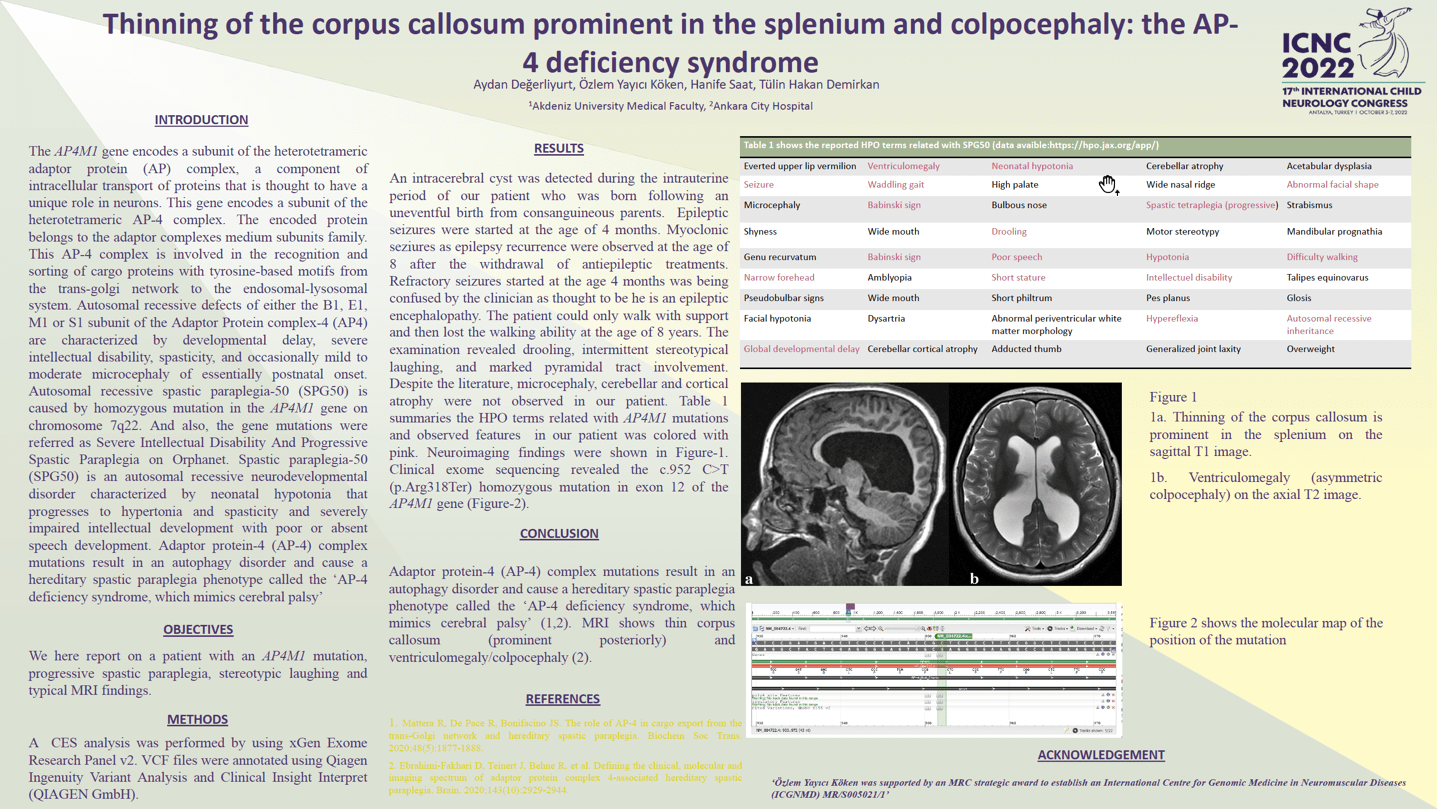Thinning of the corpus callosum prominent in the splenium and colpocephaly: the AP-4 deficiency syndrome
Aydan Değerliyurt, Özlem Yayıcı Köken, Hanife Saat, Tülin Hakan Demirkan
Adaptor protein-4 (AP-4) complex mutations result in an autophagy disorder and cause a hereditary spastic paraplegia phenotype called the ‘AP-4 deficiency syndrome, which mimics cerebral palsy’ (1,2). MRI shows thin corpus callosum (prominent posteriorly) and ventriculomegaly/colpocephaly (2). An intracerebral cyst was detected during the intrauterine period of our patient who was born following an uneventful birth from consanguineous parents. The patient could only walk with support and then lost the ability at the age of 8 years. The examination revealed drooling, intermittent stereotypical laughing, and marked pyramidal tract involvement. Neuroimaging showed typical findings (figure). Clinical exome sequencing revealed the c.952 C>T p.Arg318Ter homozygous mutation in exon 12 of the AP4M1 gene. References: 1. Mattera R, De Pace R, Bonifacino JS. The role of AP-4 in cargo export from the trans-Golgi network and hereditary spastic paraplegia. Biochem Soc Trans. 2020;48(5):1877-1888. 2. Ebrahimi-Fakhari D, Teinert J, Behne R, et al. Defining the clinical, molecular and imaging spectrum of adaptor protein complex 4-associated hereditary spastic paraplegia. Brain. 2020;143(10):2929-2944.
Keywords:

University of Health Sciences, Ankara City Hospital Turkey